Entry Category: Criminal Activities
aka: Hot Springs Gunfight
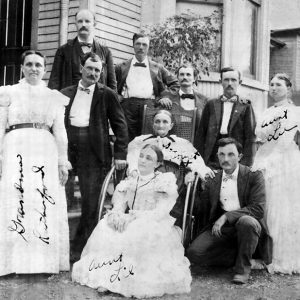 Houpt Family
Houpt Family
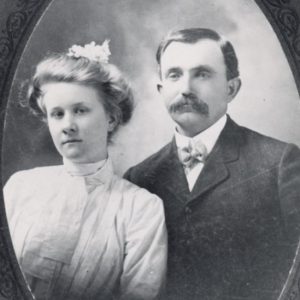 Mr. and Mrs. Houpt
Mr. and Mrs. Houpt
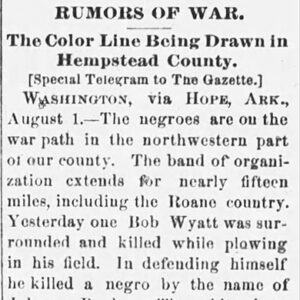 Howard County Race Riot Article
Howard County Race Riot Article
Howard County Race Riot of 1883
aka: Hempstead County Race Riot of 1883
Howard County Reported Lynching of 1894
Howard, Jesse (Lynching of)
 Jesse Howard Lynching Article
Jesse Howard Lynching Article
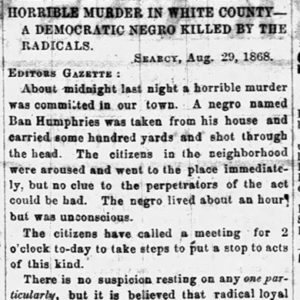 Ban Humphries Murder Letter
Ban Humphries Murder Letter
Humphries, Ban, and Albert H. Parker (Murders of)
Hunley, Dan (Lynching of)
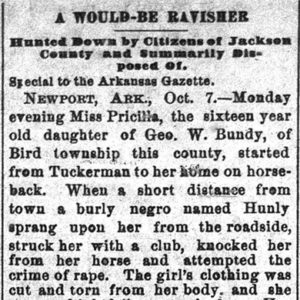 Hunley Lynching Article
Hunley Lynching Article
Hunter, Buck (Lynching of)
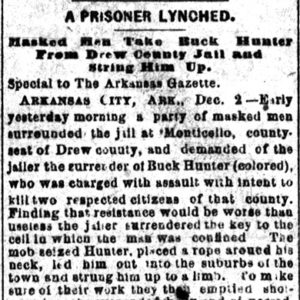 Buck Hunter Lynching Article
Buck Hunter Lynching Article
Hunter, William (Lynching of)
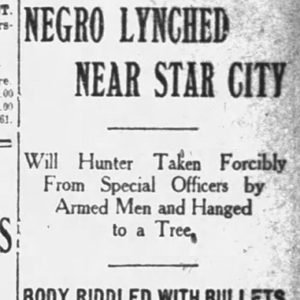 William Hunter Lynching Article
William Hunter Lynching Article
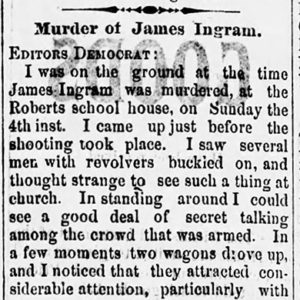 James Ingram Murder Article
James Ingram Murder Article
Island 37
aka: Andy Crum (Lynching of)
aka: Bert Springs (Lynching of)
Ives, Kevin, and Don Henry (Murder of)
 Jackson County Lynching
Jackson County Lynching
Jackson, Henry (Lynching of)
 Henry Jackson Lynching Article
Henry Jackson Lynching Article
James, Henry (Lynching of)
Jameson, Jordan (Lynching of)
 Jameson Lynching Article
Jameson Lynching Article
Jefferies, Oscar (Lynching of)
 Jefferson County Lynching Article
Jefferson County Lynching Article
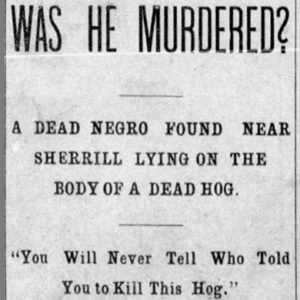 Jefferson County Lynching Article
Jefferson County Lynching Article
Jefferson County Lynching of August 1897
Jefferson County Lynching of December 1897
Jenkins, Buck (Lynching of)
Jenkins, S. A. (Lynching of)
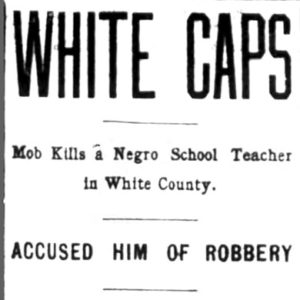 S. A. Jenkins Lynching Article
S. A. Jenkins Lynching Article
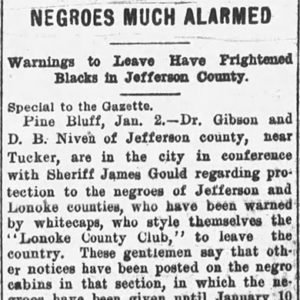 White Jetton Lynching Article
White Jetton Lynching Article
Jetton, White (Lynching of)
Jimerson, Aaron (Lynching of)
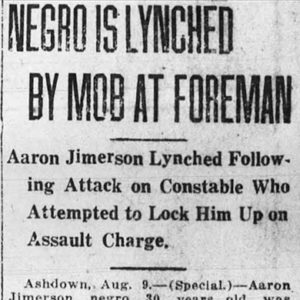 Aaron Jimerson Lynching Article
Aaron Jimerson Lynching Article
Johnson (Lynching of)
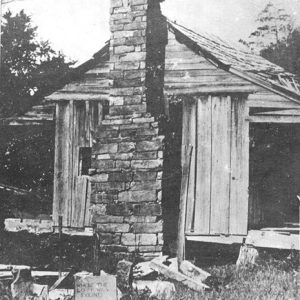 Ambrose Johnson Home
Ambrose Johnson Home
 Johnson Lynching Article
Johnson Lynching Article
Johnson, Henry (Lynching of)
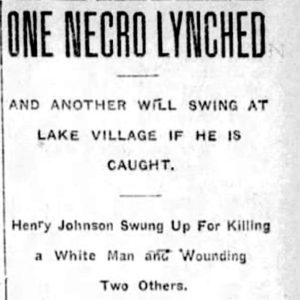 Henry Johnson Lynching Article
Henry Johnson Lynching Article
Johnson, Hugh (Lynching of)
Johnson, Jeff (Lynching of)
 Jeff Johnson Lynching Article
Jeff Johnson Lynching Article
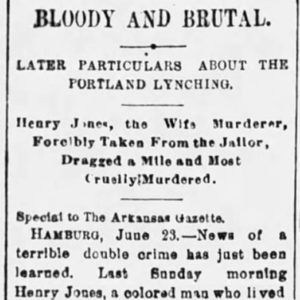 Henry Jones Lynching Article
Henry Jones Lynching Article
Jones, Henry (Lynching of)
 Henry Jones Lynching Article
Henry Jones Lynching Article
Jones, James (Lynching of)
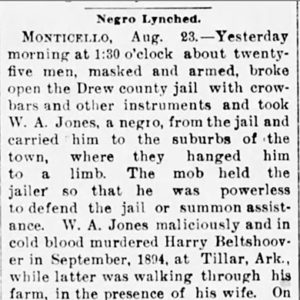 James Jones Lynching Article
James Jones Lynching Article




